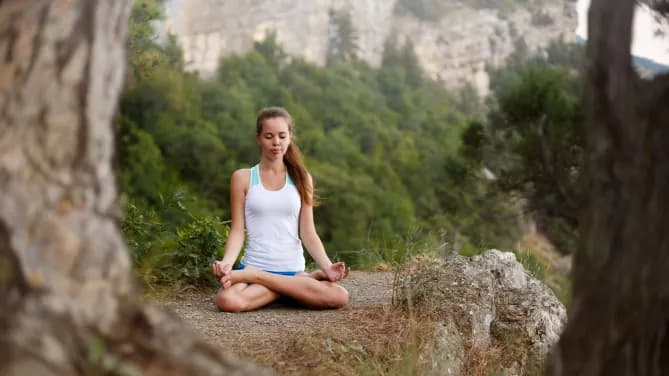What Is Wilderness Therapy — And How Can It Help Your Mental Health?
If traditional therapy isn't quite for you — or you're merely interested in trying out something new and alternative — consider wilderness therapy.
Wondering what wilderness therapy is? We've got all the answers to your burning questions.
1. What is wilderness therapy?
Wilderness therapy refers to adventure-based therapy treatment that combines experiential education with individual and group therapy in a wilderness setting.
More specifically, "Wilderness therapy, also referred to as outdoor behavioral healthcare, is a treatment modality that uses expeditions into the wilderness or other unfamiliar surroundings as a means of addressing behavioral and mental health issues," according to Good Therapy. "Though wilderness therapy represents a small subset of adventure-based therapy and broader wilderness experience programs, the approach has its own distinct characteristics."
While anyone may participate in wilderness therapy programs, this kind of outdoor behavior healthcare is primarily intended to help at-risk adolescents and young adults.
2. What is the history of wilderness therapy?
3. Are wilderness therapy camps effective?
The better question, perhaps, is why does wilderness therapy work? Wilderness therapy is absolutely effective for the right patients.
"Wilderness therapy provides a secure, non-critical and supportive environment for self-discovery," according to Good Therapy. "Individuals who find a therapist and engage in wilderness therapy are often guided through an examination of maladaptive behaviors that contribute to negative circumstances in their lives. Through the use of wilderness expeditions, primitive skills training (such as primitive fire starting) and team building exercises, disruptive or unproductive beliefs and views may be challenged and possibly transformed."
Essentially, wilderness therapy mimics the challenges found with in familial and social structures, but instead challenges individuals in an atmosphere that's devoid of all negative influences. So these individuals can learn to develop healthy relationships with themselves by relying on their own selves and strengths. They're also required to forge alliances with others in their program, which helps build communication skills, cooperation skills, trust and more.
"One of the reasons that wilderness therapy is so effective is because it allows for deep levels of trust to develop between you and your mental health professional," according to Depression Alliance. "The sessions promote openness and honesty, which allows you to gain an in-depth understanding of yourself, as well as your family. Another aspect of this therapy, which is conducive to psychological healing, is that you can’t escape from your problems in this setting. In the wilderness, you’ll have less access to avoidance behaviors, and you’ll have a higher level of support from your therapist and peers."
These experiences in the wilderness not only help to dissolve defensive barriers and promote healing, but the physical activity involved also supports the therapeutic process. Surviving in the wild, nevertheless, is empowering.
Research suggests that wilderness therapy does have positive effects on patients, too. In fact, a meta-analysis of 197 studies related to all kinds of adventure therapy (including of wilderness therapy) finds that the short-term effect of adventure therapy is much greater than that of alternative and no-treatment comparison groups, according to Psychology Today.
That said, wilderness therapy is certainly controversial — as all alternative therapies are.
"One of the most common criticisms of wilderness therapy is that the programs may not be able provide the quality or type of care that they claim they can," according to Good Therapy. "Some people are skeptical of the effectiveness of wilderness therapy due to the high variability in therapeutic methodology that may exist across different wilderness therapy programs. This situation is also affected by some teenage boot camps and other wilderness experience ventures that may falsely advertise themselves as wilderness therapy programs."
4. How much do wilderness therapy programs cost?
Wilderness therapy costs vary by program. That said, a wilderness therapy program can cost upwards of $500 a day, with programs ranging from one to about three months.
You're probably wondering, is wilderness therapy covered by insurance? Unfortunately, most health insurance companies refuse to cover alternative therapies like wilderness therapy. This means that this kind of therapy may not be for everyone, as it's certainly expensive.
5. What should you look for in a wilderness therapy camp?
- Make sure that the camp is run by licensed mental health professionals.
- Make sure that the licensed mental health professionals running the camp have experience treating your specific mental health condition.
- Make sure that the cost of the program is accessible to you.
- Make sure that the duration of the program works for you.
- Take a look at the different services offered through the program, and assess whether or not they meet your needs.
- Make sure that the camp has received authentic, reputable reviews.
Don’t miss out on articles like these. Sign up!
Why women love us:
- Daily articles on career topics
- Jobs at companies dedicated to hiring more women
- Advice and support from an authentic community
- Events that help you level up in your career
- Free membership, always
